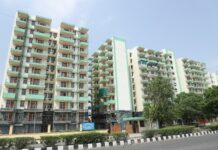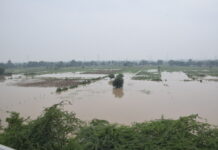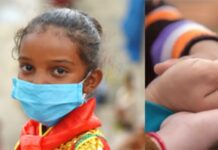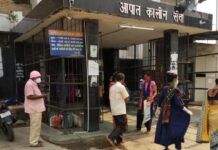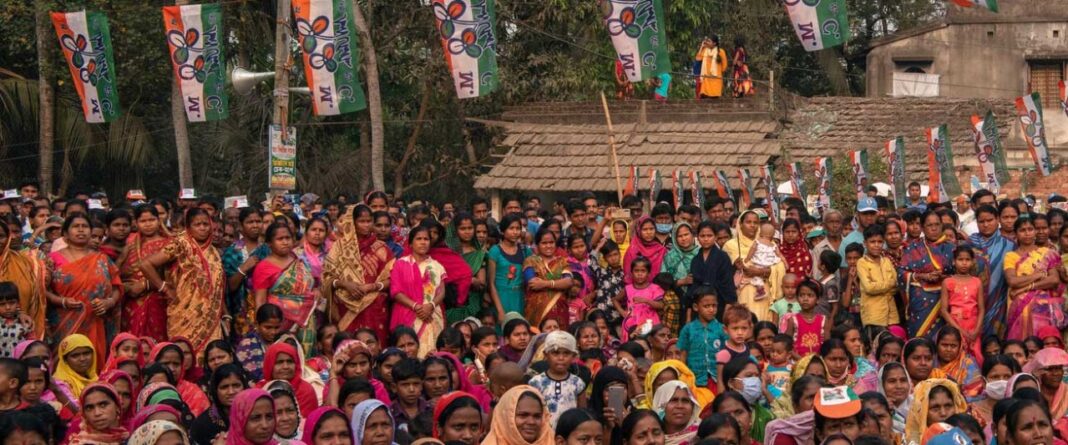From unprecedented post-poll violence to judges recusing themselves from hearing the Trinamool Congress’ (TMC) cases, the story of West Bengal appears to be a power game with all the trappings of brute force and domination. It is alleged that His Lordship declined to head the bench fearing for the safety of his kith and kin. There have been allegations and counter-allegations with all the three key parties (the Congress, the BJP, and the CPI-M) accusing each other of murders of their respective party workers.
The BJP and the TMC blame each other for the violence during the recently concluded assembly elections while the victims belonged to both the parties. While traditional rivals like the Congress and the Left remained on the sidelines this time around, the BJP and the TMC fought pitted battle both inside the booth and outside of it.
Between 1999 and 2016, violence in West Bengal saw 365 politically motivated murders. According to National Crime Records Bureau (NCRB) data released in 2019, Bengal tops the country in political murders. Recently, Union Home Minister Amit Shah cited more than 130 murders of BJP workers in February 2021.
The images surfaced on social media of the barbarity of the killings speak for themselves. Besides, these brutalities instill fear in the minds of the law and order machinery which worries about the safety of its family members.
Are these developments part of just a narrative of the rival parties or do these reflect what is happening on the ground? For an answer to this question, we need to dig deeper into the past. Historically, political violence has been a key driver in Bengal’s politics. Though the violence spikes during elections, political killings, industrial disputes, and destruction of property are carried on throughout the year.
Seeds of this malaise were sown when the first Assembly elections were held in 1951-52. In fact, the elections chartered the course of post-Independence politics in West Bengal. Indian National Congress, which won a clear majority in the elections, was confronted with post-Partition crises in the form of communal tensions, the influx of refugees, food shortages, etc. During these testing times, the Central government, also led by Congress, further dealt a body blow to the state with unfavourable economic policies.
In the early 50s, Bengal had a number of registered factories larger than that of Maharashtra and Gujarat combined. But by the end of the first four Five-Year Plan, there was a sharp decline in the state’s share of industries while that of Maharashtra and Gujarat combine registered a marked increase.
Till the 70s, it was a three-pronged fight among the Congress, the Left and Naxalites. By the turn of the century, it was between CPI (M) and TrinamoolCongress. In the last few years, it has been between the Trinamool and BJP. Though small in numbers, Communist factions like SUCI, have also been responsible for a large number of deaths of members of rival parties.
Over the years, in the absence of jobs in the formal sector, the youth in West Bengal has come to believe that the best way to ensure regular income is to align with a political party. This dependence on political parties for livelihood mostly fuels political violence as almost all the parties use the youth to settle political scores over one another.
This state of affairs owed it to a few policy decisions like slashing of the state’s share of the jute export duty, “the main cash crop of Bengal”, equalisation of freight on iron and steel and not permitting the state to charge Octroi. These policies played a major role in destabilising the industries in East India and thereby turning the state from an industrial core to a labour hub during the 16 years of Congress rule.
The policies proved so debilitating for the health of the economy that unemployment had become fait accompli for the youth of the state. Under these circumstances, the youth found solace in the Left ideology. Thrilled by the concept of egalitarian society and the success stories trickling in from neighbouring China, of land reforms and its benefits, a majority of the youth in the rural areas fell prey to the machinations of the Left parties and started believing in the maxim, power needs to be snatched.
In 1967, Ajoy Mukherjee of Bangla Congress Party (BCP) became the first non-Congress chief minister of Bengal with the support of the Communist Party of India (CPI). But his tenure was marked by intermittent political and social upheavals in the state. So perturbed was he by the goings-on that he offered to resign, not once, but thrice in the course of four years between 1967 and 1971. He cited violence, gherao, use of force and coercion to resolve industrial disputes, snatching the produce of the landowners, and other such unlawful behaviour of his ally, the CPI, as reasons for his decision.
The rein of the BCP-CPI combine saw thousands rendered jobless and innumerable SMEs destroyed plunging the state into an abyss of despair. Weary of the swelling unrest in the state, the beleaguered chief minister eventually resigned in 1972 ending a four-year-long regime.
When the Congress returned to power in 1972 with SS Ray as chief minister, the Naxalite movement, which began as a peasants’ movement in Naxalbari in north Bengal in 1967, gathered momentum by making inroads into colleges and universities. A call for the annihilation of political opponents from Charu Majumder, the pioneer of the movement, triggered a killing spree in the state. The West Bengal police under Ray crushed the movement with heavy hand albeit at a heavy cost. It’s said under Ray’s authoritarian rule, a whole generation of young men was wiped out.
It would not be wrong to say that this is the period when a culture of political violence set its roots in the state which continues to play an important part in today’s politics to date.
The Congress was punished for its omissions and commissions in general elections of 1977 as it lost power to the Left Front. The next three decades and more (1977-2011) belonged to the Left. One of the key ingredients of the Left’s hold on power was control over the rural political and government apparatus run by parallel machinery. In keeping with its promise, the Left did initiate progressive land reform measures, but by relying on coercion and violence. If sometimes it indulged in violence indirectly, at others made use of threat of violence to cement its hold.
This is the period when political violence had become endemic. Every party resorted to violence. The official record of political murders is close to 4,000, but the actual figure may be much more.
By the late 1990s, the Congress was totally in disarray with no hope of fighting the Left. This led to Mamta Banerjee, a Congress leader, breaking away from the mother party and flouting her own party, TMC, in 1998. Mamata rose to prominence on the back of a land movement. When Buddha Deb, the then CM, tried to bring about changes by setting up industries, he faced tough challenges from Mamata. As he went on to set up a Chemical Hub at Nandigram, there was a fatal clash between CPI (M) and TMC workers which became an election issue and finally led to the fall of the Left Front government in the 2011 election.
Taking charge as chief minister in 2011, Mamata promised to put things in order. She declared, “We will bring in the politics of change, not vengeance.” Notwithstanding the promise, the turf wars continued in the state with political killings becoming a routine. Within the first year of her reign, the TMC cadre allegedly killed or threatened more than 50 CPI (M) leaders and workers. Yunus Ali’s plight is a case in point. He had joined the BJP in August 2014. He is one among thousands of Left Front supporters who were slapped with false cases, beaten, and tortured by Trinamool members. Their respective parties could not provide proper protection to hide and eventually they, like Ali, joined the BJP for shelter. Every election has since been marred by political murders.
Mamata Banerjee, with her strong anti-industry stance, has slowly removed the last vestiges of industry-centric growth in the state leading to unemployment in the formal sector. And as long as there is unemployment, the political parties will always exploit the cheap services of the unemployed youth to engage them in nefarious activities.
The state needs to break away from its history of political violence and avoid long-term damage to the democratic ecosystem of the state if it is serious about its economic development and all-round prosperity.
Disclaimer: We do undertake rigorous checks on content provided by contributors before publishing the same. If you come across some factual errors, kindly bring this into our notice and we shall review your objection and claim as per our policy and display correction credits and corrections on the article itself.
The opinion expressed in the article is of the writer. Writer is a freelance journalist/journalist based in Delhi





